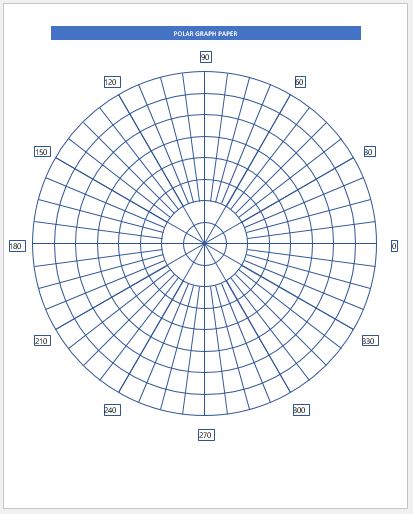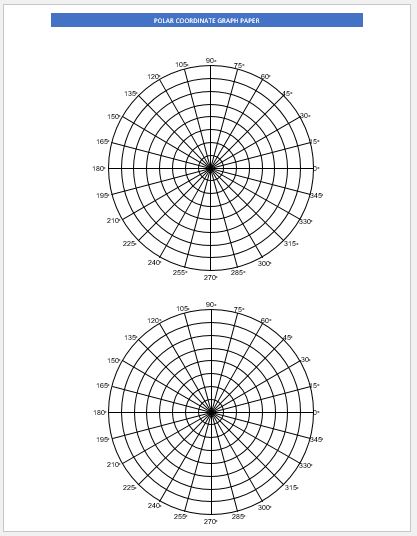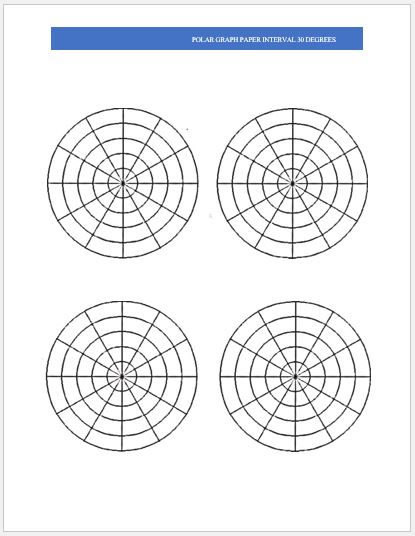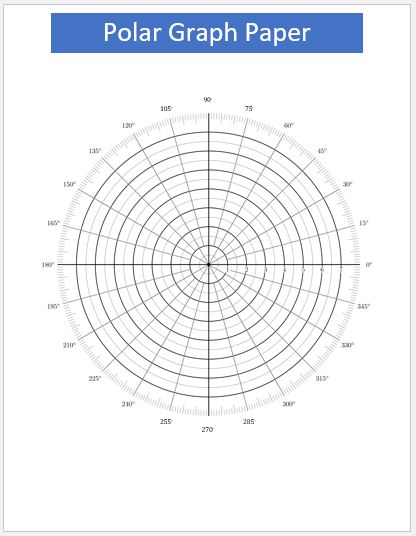Graph paper has been widely used in mathematics and engineering for a very long time. Due to the ease of visual representation of data, researchers and engineers worked a lot on graph papers and created many versions of them depending on the need of the hour. Almost every field of science has managed to assign a particular graph paper to its name. Generally available and used, cartesian graph paper is a grid of equally spaced horizontal and vertical lines that are used for representing data and evaluating answers.
Polar graph paper is used to compare insights obtained from data with minute differences. These graph papers are different from regular rectangular patterns because they include the following two values:
- Radial distance: a point is defined by its distance from the origin.
- Angular measurement: the angle that a point makes with a reference line
Due to the above-mentioned values, polar graph paper is used to represent data that includes circular movements, waves, and trigonometric functions.
Format
Polar graph papers are represented as a series of concentric circles and equally spaced horizontal lines radiating from a central point. Key elements of these graph papers include:
- Central point: The central point, also known as the reference point, is where the origin is found. It is the point from which angle measurements and radial distances are measured.
- Circles: graph paper includes a series of concentric circles where each circle represents a different radial measurement. These circles represent how data varies depending on the distance from the origin.
- Radial lines: start from the central point and divide the graph into various sections. These represent different angular measurements and are marked with radian values.
- Angular measurement: angular measurement is made with respect to a reference line, which is usually a positive x-axis in the case of polar graph paper. While moving clockwise or anti-clockwise on the graph, angular measurements can be calculated in radians.
Application
Polar graph paper finds its applications in almost every field of life because these graphs represent circular data. Some widely accepted applications of polar graph paper are given below:
- Engineering: in the field of engineering, polar graph papers are employed for designing and manufacturing elements with circular anatomy. These elements may include turbines, gears, and antennas. These graphs are highly used where designs require angular measurement.
- Trigonometry: polar coordinates are related to trigonometric functions and are mostly used for representing sine and cosine and evaluating their periodic behavior.
- Geography: Polar coordinates find their application in the field of geography. A polar graph helps in understanding and representing the distortion that occurred while presenting the Earth’s surface onto a flat map.
- Arts: in the field of art, polar graph paper plays an important role because it can be very effective in drawing geometric patterns, circular motifs, and many more art forms with precision and intricacy.
- Mathematics & physics: in these fields of life, polar coordinates are used to study the functions and behavior of waves, i.e., electromagnetic waves. Similarly, polar coordinates explain mathematical functions with great precision and represent data with such accuracy that minute differences can be captured easily.

File: Word (.doc) 2003+ and iPad
Size: 312 KB

File: Word (.doc) 2003+ and iPad
Size: 312 KB

File: Word (.doc) 2003+ and iPad
Size: 312 KB

File: Word (.doc) 2003+ and iPad
Size: 312 KB
- Daily Operations Checklist
- Operating Expense Form
- Revenue Forecast Worksheet
- Startup Capital Requirement Form
- Inventory Budget Sheet Template
- Computer Shop Business Proposal Forms
- Budget Approval Form Template
- Payroll Budget Sheet Template
- Employee Training Forms for Various Situations
- Quarterly Tax Payment Tracker
- Baby Feeding Timer
- Payroll Tracker for Excel
- Allergy and Adverse Reactions Sheet
- Delivery Route Optimization Worksheet
- Energy Consumption Monitoring Worksheet